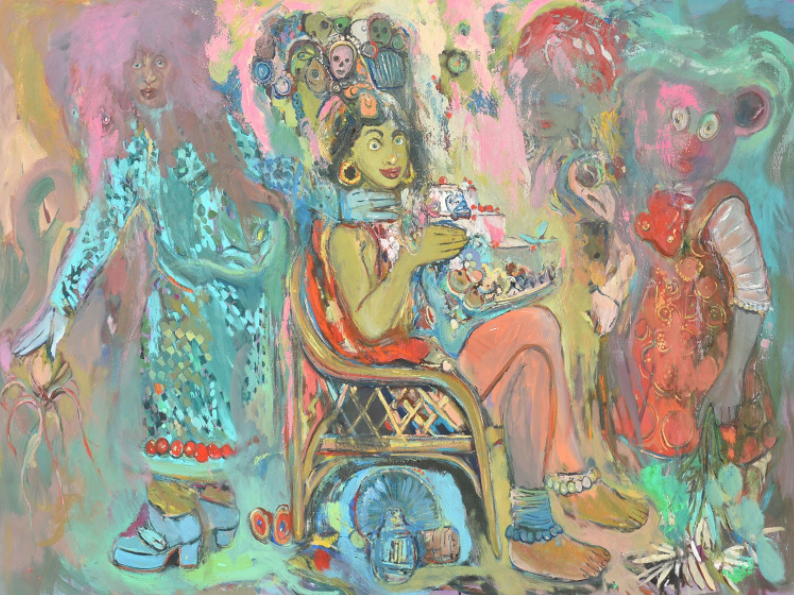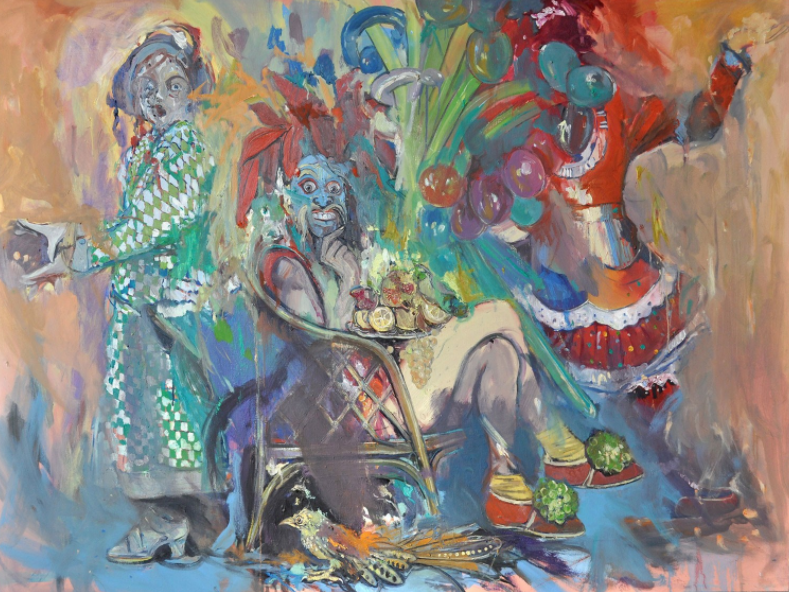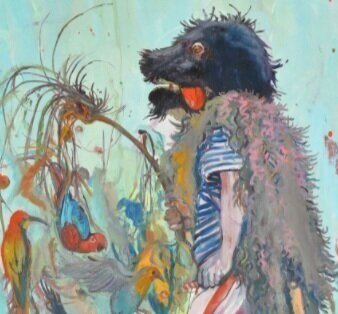A Virtuoso of the Unconscious
Arshak was a little boy sitting in a classroom in Gyumri, Armenia when he suddenly heard the crash of windows, desks hurled across the room, roofs collapsing, children screaming. He dashed into the howling streets. As he entered home he saw the floors covered with honey from the cracked jars.
That massive earthquake and the rupture with normal life – he would never return to his home again - is always present in his work. The whole nation pitched high on the Richter scale of emotion, struggling with catastrophe, hunger and war. His father, Ararat Sarkissian, one of the most revered artists in Yerevan, was a hard taskmaster teaching the boy to draw, etch and print like an old master. He sent Arshak out to draw when there was scarcely a street light in the city: the old wooden houses of the city, characters seen by night whose inner lives seemed as fantastic as a winged bird or a man with two faces.
Arshak can make the unreal seem ordinary and the ordinary seem unreal. He watches with a keen impartial eye dipping in and out of the material world. He is a virtuoso of the unconscious. He draws his people, often glaring at us with a baleful eye, groups them as if on stage, in lines or cavorting around each other fully conscious. Their world is set up to be gazed at. They know they are being watched. But can we be sure? Perhaps we, the viewers, are on stage in their theatre. His characters, such as the ageing ballerina have become so familiar to him that he must sculpt her, cast her in bronze, and bring her into another reality.
The world is topsy turvy, a woman lies under a birdcage full of chickens, an adult is being wheeled feet up in a baby carriage, a suited man prances with a rooster’s head over is face. The Bosch-like chaos of intertwining figures, animals, fruit, rolls of paper, fans, benches, trees, reminds me of the apocalyptic visions of heaven and hell. I have seen the spirit of Arshak Sarkissian in the mediaeval Armenian churches of Isfahan, Damascus and Jerusalem, in the tortures of Christ and the saints by the fresco masters. His forms and patterns pulsate with the positive-negative energy of Armenian carpets and miniatures. His rich colour palette could only be organic, never synthetic. The deep purples and apricots of Armenian mountain ranges and gorges, their inside-out, upside-down volcanic rock contortions rumble through Arshak’s visions. The humans cling together, each sealed in his bubble, yet they need one another with a desperation that is empathized by an artist still only in his thirties. Arshak’s brush is robust and his colour palette poignantly discriminating. He rapidly captures a portrait and tosses it into a composition which beguiles the eye and yet always escapes over-definition.
I have watched Arshak Sarkissian in my studio in London paint canvases and on my walls, and sculpt for hours without interruption, just as he dances, laughing and whirling, without stopping for a breath or a drink, feeding off the frenzy of his own energy. This same torrent of talent drives him on to orchestrate the visible and invisible worlds, with the death-defying resilience of his people, the Armenians, who have been close to extinction, yet dance and shout their love of life on his titanic canvases.
© Nouritza Matossian, 6 December 2019
Excerpt from 2019 interview with Sona Hamalian (Yerevan)
The heroes of my canvases are manifestations of biological and anatomical transformation and are open to all instincts, including animal bones. My characters — or, rather, personalities, as I like to call them — merge within them entire spectrums of emotion and identity, ultimately presenting the archaic as a possible utopia. Also, all objects that appear in my paintings — whether they be animals, plants, or various objects, such as shoes — have equal status, and are treated as animate beings endowed with intellect. In this sense, my works hearken to the Middle Ages, when people believed in the existence of monsters, hybrids of human and animal, which intimated a real connection between man and nature. I think it’s precisely this connection, the melding of man and nature, of consciousness and instincts, which is lacking in modern life. You can see this connection in the works of Hieronymus Bosch, for instance. It’s about a “transgression” that might lead to the development of a genuinely free society. In short, I try to depict certain human aptitudes, possibilities, and functions that have yet to be revealed in earnest or have been lost in the tide of history. Arshak Sarkissian






